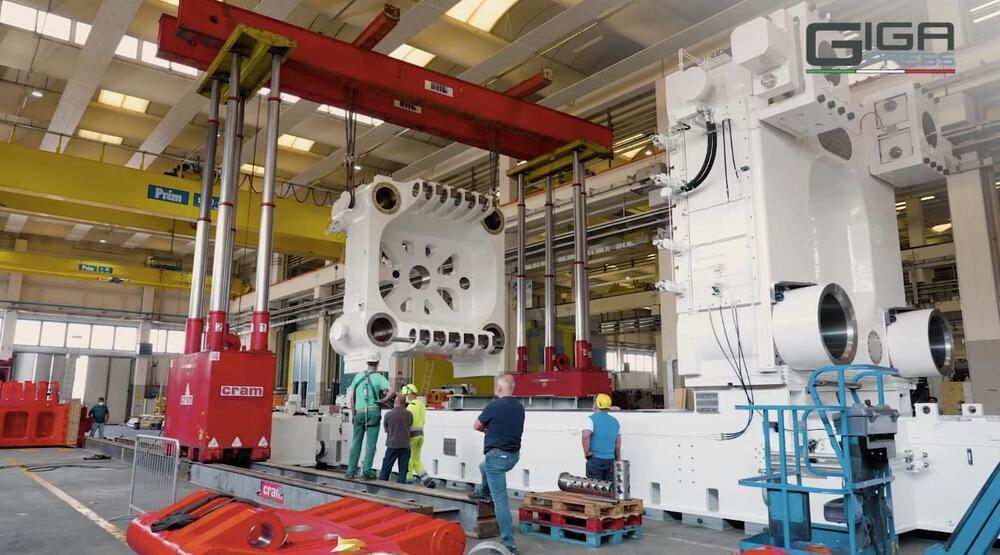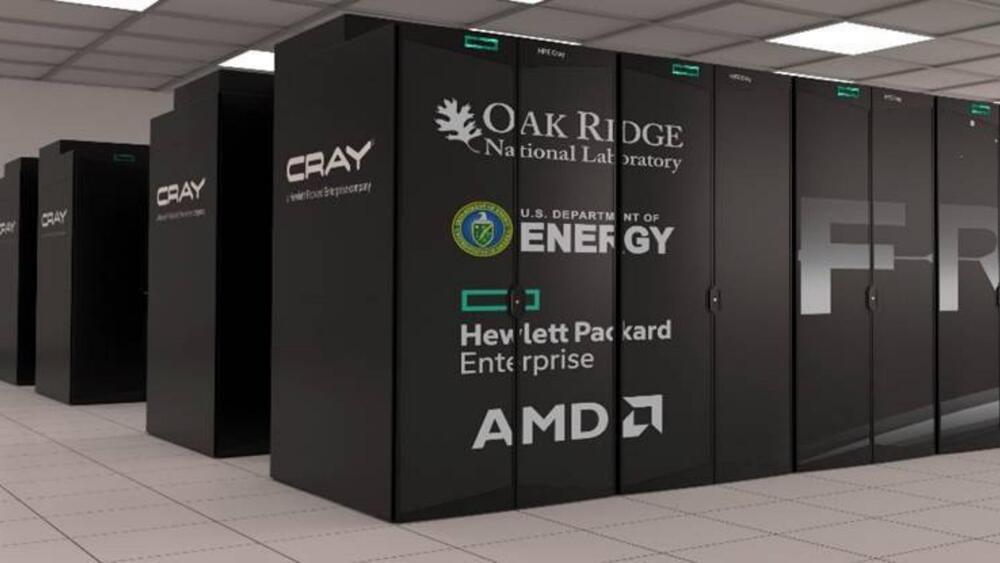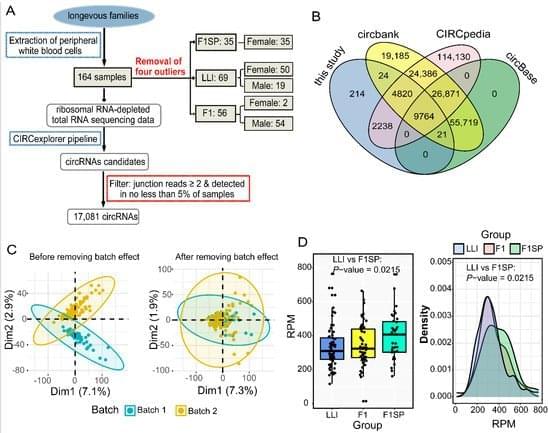NASA’s flying telescope SOFIA has been watching a dance between two stars orbiting each other as they approach the moment of eclipse, allowing astronomers to study how the two exchange stardust.



IDRA has posted a video showcasing the assembly process of its 9,000-ton Giga Press, arguably one of the largest casting machines in the market. The 9,000-ton Giga Press is expected to be used in the production of the Tesla Cybertruck’s single-piece rear underbody.
IDRA has been teasing the 9,000-ton Giga Press for some time now, with the company posting several teasers of the gigantic machine on its official LinkedIn page over the past weeks. The company will be previewing the 9,000-ton Giga Press at an open house event from June 6–14, 2022, where attendees will be able to see the assembled monster up close.
The recent assembly video from IDRA is likely part of the company’s subtle promotional efforts for the 9,000-ton Giga Press. The sheer size of the machine’s components was highlighted in the clip, as even the contraption’s parts dwarfed IDRA’s staff. One thing was evident in the recently-posted video — the 9,000-ton Giga Press is a daunting machine.

Musk’s focus on asking and answering the right questions has played a major role in the Tesla CEO’s success, as recently reported by Inc.com. With the billionaire’s net worth floating around $200 billion, even critics have to admit that a few different factors put Musk in that position, and his business savvy is definitely one of them.
Beyond being a founder of both Tesla and SpaceX, Musk’s brands have increased mainstream awareness of both EVs, a necessary step forward for the climate, and for space exploration, a huge and growing industry, for lack of a better description.
But asking the right questions is central to Musk’s ethos as a CEO, and he’s revealed this time and time again. Musk’s leadership style has discouraged the chain of command mentality in favor of the free flow of information, and he has used this to encourage anyone to search for the right questions at the right times — a strategy crucial to Musk’s approach.

The AMD-powered Frontier supercomputer at Oak Ridge National Laboratory has bagged the top spot on the Top500 list of the world’s fastest supercomputers. The Top500 list also said that the Frontier system is the first true exascale machine with an HPL score of 1.102 Exaflop/s. For two years, the top spot was occupied by the Fugaku system at the RIKEN Center for Computational Science (R-CCS) in Kobe, Japan.
Based on the latest HPE Cray EX235a architecture and equipped with AMD EPYC 64C 2GHz processors, the system has 8,730,112 total cores and a power efficiency rating of 52.23 gigaflops/watt. It relies on gigabit ethernet for data transfer.

Deep RNA sequencing of 164 blood samples collected from long-lived families was performed to investigate the expression patterns of circular RNAs (circRNAs). Unlike that observed in previous studies, circRNA expression in long-lived elderly individuals (98.3 ± 3.4 year) did not exhibit an age-accumulating pattern. Based on weighted circRNA co-expression network analysis, we found that longevous elders specifically gained eight but lost seven conserved circRNA-circRNA co-expression modules (c-CCMs) compared with normal elder controls (spouses of offspring of long-lived individuals, age = 59.3 ± 5.8 year). Further analysis showed that these modules were associated with healthy aging-related pathways. These results together suggest an important role of circRNAs in regulating human lifespan extension.

Gravitational-wave scientists propose new method to refine the Hubble Constant—the expansion and age of the universeA team of international scientists, led by the Galician Institute of High Energy Physics (IGFAE) and the ARC Centre of Excellence for Gravitational Wave Discovery (OzGrav), has proposed a simple and novel method to bring the accuracy of the Hubble constant measurements down to 2% using a single obse…
Gravitational wave scientists from The University of Western Australia have led the development of a new laser mode sensor with unprecedented precision that will be used to probe the interiors of neutron stars and test fundamental limits of general relativity.


Verizon has suffered a data breach. A hacker recently accessed the company’s employee database and stole personally identifiable information about hundreds of its employees. The stolen information includes the full name, phone number, email address, and corporate ID numbers.
According to a Motherboard report, the hacker got access to the Verizon database by tricking an employee to grant them remote access to their corporate computer. They posed as internal support and convinced the victim through social engineering. Once the hacker had access to the database, they launched a script to copy the information.
“These employees are idiots,” the hacker told Motherboard in an online chat. They shared the stolen data, perhaps part of it, with the publication. The report suggests the information is accurate but unclear how up to date. The publication called some of the phone numbers and four people confirmed their full names and email addresses. They also confirmed that they work at Verizon.

SpaceX CEO Elon Musk has revealed the first technical details about the company’s next-generation Starlink ‘Gen2’ satellite design, confirming that it will far outmatch the current generation of satellites by almost every measure.
Speaking in an onsite interview and Starbase tour with YouTuber Tim Dodd (The Everyday Astronaut), Musk – largely unprovoked – revealed that SpaceX has already built at least one functional Starlink Gen2/V2.0 satellite prototype and shipped it to the South Texas Starship factory, where it is currently being stored. More importantly, Musk also provided the first direct specifications for the next-generation spacecraft, stating that each Starlink V2.0 satellite will weigh about 1.25 tons (~2750 lb), measure about seven meters (~23 ft) long, and be almost an order of magnitude more capable than the “Starlink 1” satellites they’ll ultimately supersede.
Almost ten months after SpaceX first revealed its updated plans for a next-generation, 30,000-satellite constellation, those details have confirmed a few key points of speculation about the future of Starlink.
The observable Universe is 92 billion light-years in diameter. These pictures put just how large that is in perspective.